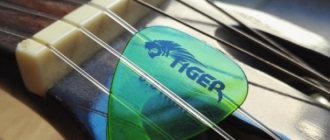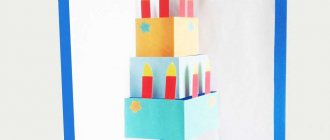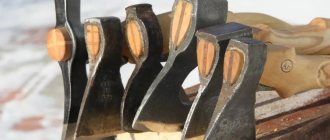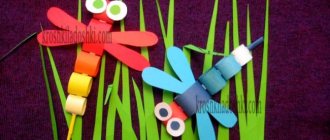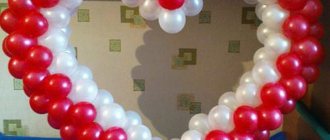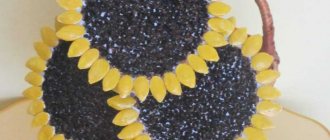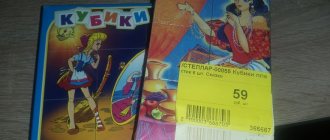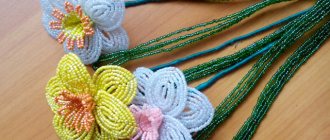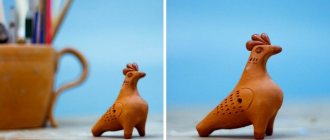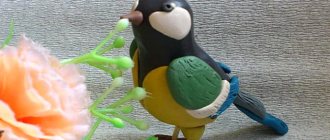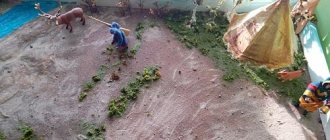A hundred years ago they were choosing goods. Today they choose manufacturers. The best manufacturers, experts in their field.
One way to secure your expert status is to conduct a master class on behalf of the owner, director or any other business representative.
Advantages of conducting MK:
- close contact with the target audience and increased brand loyalty;
- the opportunity to stand out among competitors;
- reaching an audience that cannot be reached via the Internet;
- content for other communication channels (photo, video, news feed, case);
- the opportunity to receive free brand mentions on printed posters and in the events section of city portals;
- public speaking skills training.
All other things being equal, I will choose the car service whose owner carries out MK car diagnostics. And that coffee shop where young baristas are trained. And you?
A master class can be conducted by any person who knows and can do more than the target audience of the master class. Since everyone knows more in their field than others, everyone is capable of carrying out a microcircuit.
Why am I telling you about this? He spent more than 8,000 hours on stage and became a third-degree laureate of the international oratorical competition “Ciceronius 2017.” He taught public speaking and acting. I have completed 50 trainings and 200 educational events. I consider myself an expert in public speaking. Let me make a reservation: an expert is not the one who knows the topic best. But someone who has something to learn from.
Target
It's easier to go forward than in the right direction.
Mikhail Genin
The first thing in preparing a MK is to decide what it is needed for. That is, we decide on a specific problem that we will solve with the help of MK, and set a goal.
For example, you are the owner of a wedding agency. At the beginning of each season you are faced with the following problems:
- newlyweds with a limited budget and unlimited requirements;
- disorganization and complete shifting of responsibility to the couples working with you;
- misunderstanding of the essence of your work by potential clients.
If we wanted to solve all three problems in one master class, we would have a hard time. So we choose one of the problems and turn it into a goal.
We choose the problem: disorganization and complete shifting of responsibility to the couples working with you.
Then the goal of MK is to teach newlyweds basic self-organization skills, change their attitude towards the work of a wedding agency and the division of responsibility.
Another example. You are the owner of a sporting goods store.
Problem: customers don’t know how to choose sports shoes for running and don’t trust sellers too much in this matter.
The goal of MK: to educate clients on the choice of sports shoes and increase the level of trust in sellers.
When a goal is formed, a picture of its achievement emerges. The next step is to select the criteria for achieving the goal. These criteria will help us determine among all the possible ways to achieve the goal those that are right for us.
Target audience: why know your client
Techniques for creating home comfort
If you want to not only enjoy needlework, but also create useful things for your home with your own hands, choose a practical hobby.
Making candles with your own hands is one of the best crafts for beginners, which does not require talent or special training. A beautiful and original candle can be made from ordinary paraffin candles by adding dyes, shock absorbers, decor from dried flowers, coffee, and shells. Everything you need can be easily found in the kitchen; for starters, available products will do just fine. Lessons here.
Decoupage is an interesting activity, once you master it you will learn how to turn old and unnecessary things into masterpieces. There are many decoupage techniques, but for beginners, the napkin technique is the most suitable. The principle is simple - the object is pasted over with cut out fragments of the design and then varnished.
In this simple way, without knowing how to draw, you can easily decorate a napkin holder, kitchen clock or cutting board. After treatment with varnish, the products are not afraid of moisture; they can not only be admired, but also actively used for their intended purpose. Having mastered needlework, you can combine diverse old dishes with the same decor.
Making sachets is another simple craft for the home that results in fragrant bags of herbs. The sachets are laid out in closets and linen drawers. They are flavoring agents and aromatherapy elements.
For those who learn to sew, there is always a use for their talents. You can sew sofa cushions, potholders, kitchen decorations, voluminous toys, and pincushions. Some fabrics don't even require a sewing machine.
Making topiary is a simple and fun craft that results in beautiful crafts for the home. For beginners, the easiest way to make topiary is from ready-made decor - artificial flowers, natural materials, soft toys, sweets, coffee. Ribbons, polymer clay, and foramiran are suitable for homemade decor.
Criteria
Does the person use the method or does the method use the person?
Slawomir Mrozek
There are many ways to achieve a goal. Ice cream can be purchased at any of the 20 stores in the area and online. MK on running technique can be carried out in a hundred ways with dozens of different theoretical data or put people on a treadmill.
To limit the options for achieving a goal and select the best ones, we use criteria. The criteria are how we will move towards the goal and how we will understand that we have achieved it. They limit the ways to achieve a goal.
There are criteria of circumstances and criteria of choice.
The criteria of circumstances are dictated from the outside, and we cannot influence them, or it is difficult and irrational. As the name suggests, we choose the selection criteria.
Now about the criteria using an example.
Business: bakery.
Problem: we purchased a large batch of premium tea, there is no demand.
The goal of MK: to introduce customers to new products, change their attitude towards the premium tea segment, and collect contacts for SMS distribution.
Circumstances criteria:
- own premises;
- on Sunday morning the highest average bill;
- the worker Masha gets along well with people and is not afraid of the public;
- in a week there is a city holiday;
- Nearby are the offices of a small IT company.
Criterias of choice:
- duration MC 60 minutes;
- There is a teaware store nearby, and we can cooperate with them;
- Not all Mashenka buns are sold on Sunday; we can offer some for free for tea to MK participants;
- at the end of MK we will offer to exchange contacts for a discount and will send the discount via SMS;
- since rain is promised, it would be nice to negotiate with the taxi company about a discount for MK participants, and we will sign them up as sponsors for this;
- At the end we will conduct a quiz for the best knowledge of our tea and reward the person with a gift set.
Attention, the criteria are not a plan, but restrictions and ideas on how you want to conduct your master class. With their help, a plan is created, in our case the structure of the microstructure.
Review your criteria as you prepare. It often happens that over time, some criteria cease to be relevant, and others appear.
Examples of completed MKs
Below you see examples of master classes based on my lessons in Word. At the start, participants had different understandings of how to create their own MK. The level of knowledge of the program varied, but everyone had excellent results.
| Master class by Marina Vaiciskauskas. Marina took a prize in the Marathon and received free participation in the Turnkey Video MK training. | |
| Master class by Margarita Revonenko. A very high quality MK, like all of Margarita’s works. | |
| Master class by Elena Bogatskaya. Despite the fact that Elena’s master class was not about needlework, all the recommendations were followed and the final document is ready for publication on the Internet. |
Which option to choose: Word or Canva is up to you.
If there is a lot of text, then it is better to master Word. If there are a lot of photos and text is not important, then it is more convenient to work in Canva.
Where does the creation of a master class begin? Write a master class (text), add photographs, beautifully design (font, frames, etc.). That is, we start with the text.
Let's look at what should be in your master class, without which it will be “short” and unfinished.
How to make your MK high-quality
What should be in a master class on almost any topic to make the author look like a professional?
Area
When the driver looks for new tracks, the car goes off the rails
Emil Krotky
Choosing a site is a stumbling block for many MKs.
This section is relevant for those who are holding an event in someone else’s premises. If you have your own site, but it does not meet 50% of the criteria stated below, consider choosing a third-party site.
The choice of site depends on the method of attracting the audience:
- this may be a new audience for you and the site;
- audience familiar with your product;
- or the audience of the site who is not familiar with your product.
If you're reaching a new audience or an audience familiar with your product, consider the following:
- convenient location (proximity to the city center, stops, parking, possibly bicycle parking, landmarks nearby);
- convenience of location in the building (definitely not the tenth floor with a non-working elevator, it is best to enter from the street or the first or second floors in a building with a clear passage pattern);
- availability of the required number of seats (chairs) + 5 more spare ones;
- availability of a projector if necessary +, if possible, another spare one;
- the presence of an administrator if you do not have your own person to meet guests;
- the ability to organize a coffee break if necessary;
- availability of marker boards or flipcharts, sheets, writing markers and other consumables as needed.
If you are creating a MK for the audience of the site itself (art space, cafe, training center), in addition to the above points, consider the following:
- compliance of the site and its capabilities with your goal;
- compliance of the site’s audience with your chosen goal;
- Attendance at events at this location;
- main channels of communication with clients;
- additional criteria indicating whether the site meets or does not meet your goal.
We find out the above as follows:
- We analyze social networks, community members, topics discussed in comments and published invitations to master classes.
- We ask the site administrators about which clients come to them, which events are the most popular, and which, on the contrary, are not successful.
- We ask the site administration to launch a survey on social networks to find out whether their clients are interested in your topic, or we come to one of the most popular events of the site and independently analyze the audience and correlate it with the target audience.
- We go to the site’s events and during breaks we talk to visitors, ask if they would be interested in your topic; it’s also useful to talk with the speakers, find out what they like and don’t like about this site.
- We conduct our MK and analyze who came, collect feedback, find out whether expectations were met, what we liked, what could be done better, etc.
Let's look at what is described using a specific example.
Business : sale of electronic cigarettes.
Problem : low sales of vapes (electronic cigarettes) for "smoke tricks".
The goal of MK : to increase sales of premium products created specifically for “smoke tricks”, to change the attitude towards electronic cigarettes from an alternative to conventional ones to a fashion accessory that gives a certain status.
Site selection:
1) Vape bar “001”:
- basement;
- spacious smoking room with extractor fan;
- multi-colored lighting that will perfectly highlight the smoke;
- vape club meetings are held here;
- located in the city center, entrance from the street, near the parking lot from the offices, which is empty in the evenings;
- their clients just come, they rarely visit the bar’s social media pages, they learn about events from posters at the entrance and from bartenders;
- about 2/3 of visitors smoke vapes and have an average income or higher;
- Among weekdays, Thursday has the largest average check.
- We can agree on a free MK, presenting it as mutual PR.
2) Educational:
- occupy a pair of connected rooms on the third floor in an office building;
- the room is poorly ventilated, you need to leave it for several hours;
- visitors to the center have heard practically nothing about vaping; if you hold an event here, then invite your clients or a vaping fan club;
- It is impossible to agree on free carrying out.
The principle is simple - a site that meets the criteria. After selecting the premises, we review the circumstances and selection criteria. For example, if we choose bar “001”, we adapt to their event schedule and conditions.
If we are doing a master class for a venue audience, we choose the topic after the venue. If the topic is primarily important to us, then vice versa.
If you need a landing page, corporate website or online store, please contact us. More details
Award materials and publication documents
For each material that meets the conditions of the promotion, an electronic certificate of publication is issued free of charge . To receive an electronic document, you do not need to pay anything or submit an application; the documents are sent by the site secretary after reviewing and publishing the material within a few days.
Paid paper documents are sent to the author by registered mail, after sending the postal identifier of the shipment is sent to the author.
The author, at his discretion, can order:
- paper certificate of publication on the pages of the media with a “living” signature and seal - 150 rubles. When publishing a student’s work, the mentor’s full name is included in the certificate.
- paper certificate for the author about publication on the pages of the media with a “living” signature and seal - 150 rubles.
- paper certificate of the mentor about the publication of the student’s work on the pages of the media with a “live” signature and seal - 150 rubles.
- paper thank you to the author for filling our site when publishing 3 or more materials at different times - 150 rubles. The number of thanks given under this condition is limited. A “live” signature and seal is placed on the document.
- paper thank you to the mentor for filling our website when publishing 3 or more student materials - 150 rubles. The number of thanks given under this condition is limited. A “live” signature and seal is placed on the document.
Sample thank you design. The author can choose any design from the forms available at the time of order.
Subject
What the teachers digest, the students eat
Karl Kraus
The topic is what you already know and what students want to know.
It is selected on the basis of the compiled MK system: goals, criteria of circumstances and choice, site.
It usually happens like this: either the topic is clear right away, or there are several good options, or nothing comes to mind at all.
Everything is clear with the first option. In the second option, run all the topic options according to the criteria. Whichever fits best, leave that one. If that doesn't work, ask 10 members of your target audience what they like.
If nothing comes to mind, topic options can be found in thematic blogs, educational courses, book sections, or even in videos on YouTube.
In the site section we gave an example of the sale of “vapes”. Their theme, after reading all the criteria, becomes obvious - “Master Class on Vape Tricks”.
An example of a topic search.
Business : retail sale of stationery.
Problem : the new budget line of products is practically not selling.
The goal of MK : to change the attitude towards the budget line of stationery, to collect a base for sending out offers, to sell some of the products at a discount for testing.
Circumstances criteria:
- the workers we call will not come outside of working hours or will be dissatisfied with this; we should also do MK closer to the middle of the week so that they are not busy with Monday planning meetings and Friday rush jobs;
- we can give a discount of up to 30% on your first order;
- We have 10 clients who ask for discounts on the main line, but refused to try the budget one.
Criterias of choice:
- you need to try stationery with your hands so that people feel that they do not feel the difference between cheap and more expensive goods;
- An office space is ideal for MK, where you can show your work using standard equipment;
- everyone thinks about their own benefit, we can offer responsible employees a free lunch after MK.
- It is best to choose your office as a site, if available, or part of the office of one of the companies, if they agree to it.
Theme options. In the form of a title, it could be “How to save money on office supplies” or “Where money goes when buying office supplies.”
It is important that your topic and, accordingly, the name of the event simultaneously reflect the essence of MK and attract the attention of the target audience. Is there a topic? Let's move on, let's move directly to writing mk.
How to create your own MK
How to make master classes with your own hands? MK in PDF format can be created in various programs. I have chosen two for myself that are available to anyone.
- Word text editor . It is installed on almost every computer.
- Canva, online editor . Free service for designing graphics.
You will need minimal skills to work either in Word or in Canva. I give as much detail as possible about which buttons to press so that everything works out for you.
At the end of this article you will find links to mini-course lessons with descriptions of the topics covered.
Master class structure
People don’t come to the theater to see tears, but to listen to speeches that bring them out.
Denis Diderot
Do you think that people come to master classes only for knowledge?
The main reasons to come to your MC:
- social proof of the status of “self-developing”;
- spend time in pleasant company and in society in general;
- gain certain knowledge and use it in your life (if your topic is relevant).
For the first and second ones, photo zones and networking areas are made at conferences, for the rest, reports are read. We focus on the latter, but we make sure that everyone is comfortable.
The latter who came for knowledge are divided into subtypes:
- people who do not know what or how to do, but know why;
- people who know what to do, but don't know how to do it;
- people who know everything but don't do it;
- people who know everything, do everything, came to improve their level of knowledge.
For the first ones, who do not know what and how to do , they create introductory master classes, construct a foundation, a system that they will fill.
Example: “Introduction to the barista profession: 10 reasons for and 5 against.”
For the second, who don’t know how to do it , they create advanced master classes, revealing the “secrets” of the profession that you have learned over the years.
Example: “How to raise a genius: educational games for your children.”
For still others, who know everything but don’t do it , they create workshops (practice-oriented master classes), instilling work, showing that practice is not so scary.
Example: “Don’t overdo it. Master class on making soups."
For the fourth, who came to improve their level of knowledge , highly specialized master classes are created.
Example: “How to set up auto funnels in VKontakte mailings.”
Who will come to you? Is the chosen topic suitable for them?
Introduction
Great teachers! When making speeches, do not cover your ears
Bertolt Brecht
The introduction is the beginning. At first they listen to you most attentively. Your task is to maintain attention until the end of the microsecond.
Classic introduction strategy:
- Give motivation;
- Confirm your expert status;
- Include motivation of participants;
- Give a plan.
Give motivation
The purpose of this block is to show who the audience will become after finishing your master class.
One of the motivation formulas: a description of the knowledge, skills or abilities that the client will have and a specific example of their application.
Example: “You will learn how to chop wood in three ways and will be able to prepare firewood for a Siberian bath.”
Confirm your expert status
The purpose of this block is to show that you are fit to be a teacher. The “Numbers and Figures” technique helps a lot. Try listing the number of hours you spend working in your field. Or the number of consultations, procedures. You can calculate something else. In numbers, “great experience” looks more convincing.
I once advised a client on writing a resume; she was a candidate of legal sciences and was teaching at the university at the time. We counted how many academic hours she spent as a teacher. More than 10,000 came out! This is the effect, the client herself was shocked. By the way, she was offered a position higher than expected.
Example: “In my life, I have repaired more than 1,000 mobile phones and 300 tablets. The average repair time is 4 hours if components are available. 90% of clients never returned to me with the same equipment.”
Enable participant motivation
The purpose of the block is to remind participants why they are here.
It is implemented by a simple question: “What knowledge do I want to take with me from this master class?”
Example: “After our workshop on photographing food for Instagram, what will be the first thing you photograph?”
Give a plan
The purpose of the block is to tell how you will take listeners from where they are now to their goal. And also create a system to fill it with knowledge.
A plan in the form of points is good, to say it in “simple human language” is excellent, but together it is generally wonderful.
Example: “Today you will learn how to come up with new ideas. I’ll tell you about two techniques for creating ideas, and you’ll put each into practice, and we’ll also conduct a mini-brainstorm.”
One more point is possible.
Meeting the participants
The purpose of the block is to prepare for teamwork and relieve tension.
Example: “circle of interests”. You are asking a question about a specific topic. An example for mobile photography courses: “what was the last photo you posted on Instagram.” And “Name the song you sang in the shower for the last time” is perfect for MK vocals.
Main part
When learning science, examples are more useful than rules.
Isaac Newton
How right Newton is! I hope you enjoy the examples in this article. The more examples and practical tasks, the better the understanding.
A few learning principles:
- theory provides understanding;
- examples and practical tasks teach you to apply what has become clear;
- During the completion of tasks, additional questions arise, this problem is solved by feedback;
- people's attention resource is limited, according to various studies it ranges from 7 to 25 minutes;
- the attention resource is renewed when changing activities.
Based on the above principles, an iterative learning cycle is built.
Training cycle:
- Theory
- Practice
- Feedback
Theory
The task of the theoretical part is to explain and show how “it” works. We turn tricks into tricks and magic into technology.
Method "Active lecture"
We take dry informative text and divide it into thematic blocks of 5-7 minutes for each. It’s cool to come up with each block its own special type of “information delivery”, using not only text, but also audio, images, tactile sensations, smells, etc.
Example: I want to teach how to make photo frames out of wood at MK, and my block is “coating the frame with varnish.” Instead of simply saying “coat with matte varnish, otherwise it will be bad, move the brush slowly back and forth, but not here and there,” I do the following: we provide examples of frames without varnish and with poor varnish application. “Here the frame is rotten, and here you can see sloppy strokes, so that this doesn’t happen, we apply matte varnish and move it back and forth.” Visual, informative, understandable.
After 3-4 blocks of theory, we consolidate the information with practice.
Practice
The purpose of the practical part is to teach how to act independently. Once you perform the “trick” yourself, you really understand that it is a trick.
You know, you are reading this article now, and perhaps your hands are itching to write your MK. Most likely, if you don’t start writing your MK right now, your hands will get itchy. Also with the participants of MK. If they don't try it themselves, the knowledge will be lost.
Example: we are conducting a master class on writing a resume and have already talked about 7 main mistakes. We can unite participants into 2-3 groups, give them the task of finding errors in the example resume and suggesting improvements.
When choosing practical exercises, remember the tasks of the theoretical part.
Loop Feedback
The purpose of the feedback is to raise questions remaining from the participants and once again reinforce the main ideas of the theory.
Example: You can ask the following questions:
- “What do I remember best?”;
- “What can I apply in my life or work?”;
- “What did I like most?”;
- “What can you add to what the speaker said?” and others.
Your MK can fit into one training cycle, about 60 minutes, or maybe several. Then take a break every 2-3 cycles.
Approximate time for each part of the training cycle:
- 3-4 blocks of theory – 15-20 minutes;
- Practice – 15-30 minutes;
- Feedback – 10-15 minutes.
How to make a great presentation if you're not a designer
Example
Let's say ours is for a musical instrument store and we teach the basics of playing the guitar. The main part might look like this.
Learning Cycle I
Theory
- block. Getting to know the structure of a guitar: soundboard, neck, pegs, strings.
- block. Position of the guitar for playing, position of the hands.
Practice
One participant sits on a chair in the center, picks up a guitar, shows the position of his hands, talks about the structure of the guitar, the remaining participants correct him if he is wrong. Later, the remaining participants take turns picking up the guitar for a minute and imitate the correct position of their hands.
Feedback
Participants answer the questions:
- “What sensations did you experience when you held the guitar in your hands?”;
- “Was it comfortable to hold the guitar in this position?”;
- “Do you still want to hold the guitar in your hands?”
Training cycle II
Theory
- block. Sounds made on a guitar. Sounds of open strings, notes.
- block. Types of games. Playing with your hand, playing with a pick.
Practice
Participants pair up with one guitar per pair. They are asked to play the beginning of the melody from the song “Metallica – Nothing Else Matters”, which is played on open strings. A mediator is assigned to the group so that the participants try both playing techniques. First, the presenter shows the playing technique, then in groups the participants try to repeat it. The leader approaches each group in turn. The purpose of this exercise is to show that even beginners can play beautiful music from an iconic composition.
Feedback
Participants answer the questions:
- “How did you feel when you played this melody?”;
- “Which technique is more convenient to play and why?”;
- “Do you want to play more?”
At this point we can end the MK and offer guitars at a discount.
If the audience is active and gives positive feedback, you can do it.
Conclusion
Education is what remains when everything learned is forgotten.
B.F. Skinner
What remained in the minds of the MK participants after the main part? What will they take home with them?
The conclusion is, on the one hand, an opportunity to once again consolidate what has been covered, and on the other hand, to receive feedback on the entire MK and its organization.
Three stages of conclusion:
- Summarize the training.
- Complete the training.
- Collect feedback.
Summarize the training
The task of the stage is to consolidate the theses of the main part.
Example: participants are asked to take turns in chronological order to recall the events that occurred during the MK. It might look like this:
- “I walked in and sat down on a chair”;
- “You came on stage and greeted us”;
- “You talked about the importance of self-education in our time”;
- “We did a familiarization exercise,” and so on.
This exercise will allow you to reconstruct the events of MK in your head, associate them with images, and remember the main points. It can be simpler - repeat the theses yourself.
Complete training
The task of the stage is to switch the type of activity of the participants. The training is over, you can relax.
One way to make this switch is through a light and fun game. Games for children that can be Googled in large quantities are great.
Example: MK participants sit in a circle, holding hands. The leading MK sits among them. The leader launches “waves” with his hands, that is, if he raises his right hand, the wave goes to the right, and the person sitting to the right of the leader also raises his hand. And then the one sitting to his right and so on. The fun begins when the training leader launches several waves, and one of them in the other direction. With this exercise you will redirect the participants' attention, relax them and complete the learning phase.
Collect feedback
The purpose of this stage is to receive feedback on the training and the state of the participants, to allow them to express their remaining emotions.
An example of such feedback collection is the Weather Forecast exercise. Participants are asked to imagine that they are giving a weather forecast to their internal state. First, they describe what kind of weather they came with, then how it changed during the MK, what it is like now, and what it is supposed to be like in the near future.
With this exercise, you can express accumulated emotions without unnecessary or personal details. If your audience is “too serious” for such exercises, you can limit yourself to the question “What will you take with you from this master class?” or “What was the most useful thing for you in this master class?”
If during your MK the weather of the participants improved or they took a lot for themselves, you did it, I congratulate you.
Decoupage furniture for beginners
Real vintage furniture is very expensive, but that’s what decoupage is for - to imitate antiquity and decorate initially faded furniture. Beginners should start with something big - for example, with a chest of drawers . You will need:
1. Actually, a chest of drawers 2. Decoupage pictures 3. Acrylic varnish and paints
IMPORTANT: If you want to create truly vintage-looking furniture, do not skimp on craquelure varnish. It will give the necessary cracks when drying, which will create the desired visual effect.
4. Bitumen 5. PVA 6. Scotch tape
Let's get started:
- First of all, unscrew all the metal handles - they will only interfere with the work. Most often, chests of drawers are polished - in this case, treatment with sandpaper and primer is necessary
IMPORTANT: If the dresser is not polished, do not waste time sanding and priming. It is enough to simply apply acrylic varnish.
- Now it's time for the golden paint . It needs to dry well
This is what the chest of drawers looks like before decoupage and after the preparatory stage
- Measure a centimeter from the edges. Apply the tape for an hour so that the tape protrudes. It's the same with drawers.
Gluing tape during decoupage
- Apply white enamel to furniture tops and drawer faces
Applying enamel during decoupage
- It's time to craquelure - apply it to the side panels of the chest of drawers
- When an hour has passed after applying the tape strips, remove them. The same surface that was previously under the tape should be painted over with brown paint.
IMPORTANT: Apply brown paint with a sponge - this is how it will adhere best
- the enamel-painted part of the chest of drawers with sandpaper. You need to try until the golden paint shows through.
- Cut out those designs from decoupage napkins that you want to stick on furniture. Glue them with PVA and smooth them out. Wait for the glue to dry
- Cover the furniture with craquelure again . This time, try to ensure that the craquelure varnish covers the entire surface of the chest of drawers along with the drawings
This is what the chest of drawers will look like when decoupaged after applying drawings and craquelure
- Wait for the craquelure varnish to dry. Cover the surface with it again. Wait until it dries - after that cracks will begin to appear.
- Rub the resulting cracks with bitumen - this is the final stage of the work.
This is what the chest of drawers looks like after simple decoupage for beginners
Promotion
Running a business without advertising is like winking at girls in complete darkness
Stuart Henderson Britt
As already mentioned in the chapter on choosing a site, you can do the promotion yourself or entrust it to the site itself. If you are preparing a MK for a site audience, the most important thing is to work with the main communication channel.
The main channels of communication with clients can be:
- community on a social network;
- communities of partners on a social network;
- advertising on social networks;
- calls to the contact database;
- poster in the venue;
- posters in the city/establishments.
Main mistakes on the part of the sites:
- unprofessional work with social networks. This includes the time of posts, their format, work with comments, features of each social network;
- weak texts. This is about the lack of a captivating title and information about the speaker, about unreadable contacts, lack of appeal, and so on;
- wasting the potential of the CRM base. This is about the fact that you can send an SMS, call with an offer, write to Viber or WatsApp;
- The poster has more design than substance. This is about the text on the poster and about overdoing it with graphic tricks.
Event promotion: tips and comments from experts
Decoupage for beginners step by step on wood
It's best to start with something simple - for example, a cutting board. This thing will serve to train decoupage skills and will be used often in everyday life. So, stock up :
1. The board itself 2. Acrylic paint of white and gray colors 3. Decoupage napkin 4. Acrylic varnish 5. Water in a glass 6. PVA 7. Sponge 8. Brush 9. Toothbrush, which is not used 10. Candle 11. Sandpaper
Here's what you'll need to decoupage the board:
We create beauty:
- Apply white paint to the entire outer surface of the board using a pressing motion . Start application from the top of the board
IMPORTANT: For convenience, the sponge should be cut into 2 or even 3 parts.
Applying white paint for decoupage
- The piece of image that is needed is carefully torn off or cut out from the napkin.
Cutting out the desired piece of design from a decoupage napkin
- The topmost layer with the picture is separated from the desired piece This should be done as carefully as possible
Separating a layer from a napkin for decoupage
- Add PVA to a glass of water in such a ratio that you end up with the consistency of liquid sour cream. Place the required piece of the image on the board. Dip the brush into the glass and drop a little solution into the middle of the drawing
This is how decoupage drawings should lie on the board
- The glue needs to be spread over the design with a brush . The pattern should be carefully smoothed out in order to avoid wrinkles and the effect of bubbles.
The decoupage drawing must be carefully glued to the board.
- Glue other images using a similar principle.
Decoupage pictures are applied according to the same principle
- rub the candle on the edges of the board
A candle can be useful for decoupage
- Next, paint the edges with gray acrylic paint . Apply it with a sponge using pressing but gentle movements.
IMPORTANT: Do not overdo it with the amount of paint - there should be a little of it.
Gray paint for decoupage is applied to the board
- Gray paint should be applied to the rest of the surface , but this time with light rubbing movements
Gray paint for decoupage is applied to the rest of the surface
- Sand the edges . Since they were treated with a candle, they will turn white
Sand the edges of the board during decoupage
- Now gray paint is applied in a small amount to the toothbrush. Swipe the bristles away from you to create splashes
Splashes - another decoupage trick
- Now make splashes like this with white paint.
Splashes of white paint will also come in handy during the decoupage process.
- The final stage is coating the board with varnish.
Apply varnish and the Provence style board is ready
My Art School of Painting (CAO)
Address: Taganskaya metro station, Vorontsovskaya st. 25, building 3, room 19 Website: https://myartscool.ru Phone: Cost: from 1500 rub. per lesson
Master class “Creative Friday” (1800 RUR)
In this lesson you can paint your own oil painting or interior painting with acrylic paints with or without gilding, according to the subject of your choice. The promotion is valid only on Fridays, only at 18:30-21:30. Registration is required!
Master class “For two” (4000 rubles) Come and paint together with your child, husband, girlfriend, colleague. Joint creativity brings people together! You will be surprised how talented you and your loved ones are!
INCLUDED IN THE PRICE:
- Plot of your choice
- Canvas 30 x 40 cm
- Paints
- Brushes
- Packaging of the painting
- Tea, coffee, cookies
- Great mood
Our selection is the best on the Internet
We have tested and proven MKs, recommendations from craftsmen and the latest cutting-edge techniques, collected bit by bit from all over the world with various levels of complexity. Headings are presented:
- Crafts (clay, nylon, fabric, plasticine, from natural and artificial raw materials).
- Crochet and knitting (cardigans and dresses, tops and skirts, shawls, hats, stoles).
- Handmade.
- Gift options for any occasion.
- Applications (made of paper, fabric, cereals, seeds, etc.)
The training format is different in that the technical aspects are explained in accessible language. There is no need to sign up for expensive courses; they will be fully replaced by our portal, guaranteeing excellent further results.
Flower arrangements
In order to make flowers from wire and thread with your own hands, you need to be patient and have some materials. To get started, you'll need the following tools:
- spoke;
- thin and medium wire;
- threads
First you need to wrap a thin wire around a knitting needle. The turns of the wire must be done carefully and as tightly as possible. Then you need to pull out the knitting needle and put the resulting thin spiral on the middle wire. This design will be the frame for the flower. Next, you need to roll the frame into a petal shape. The next step will be wrapping it with threads. The thread must be passed between turns.
